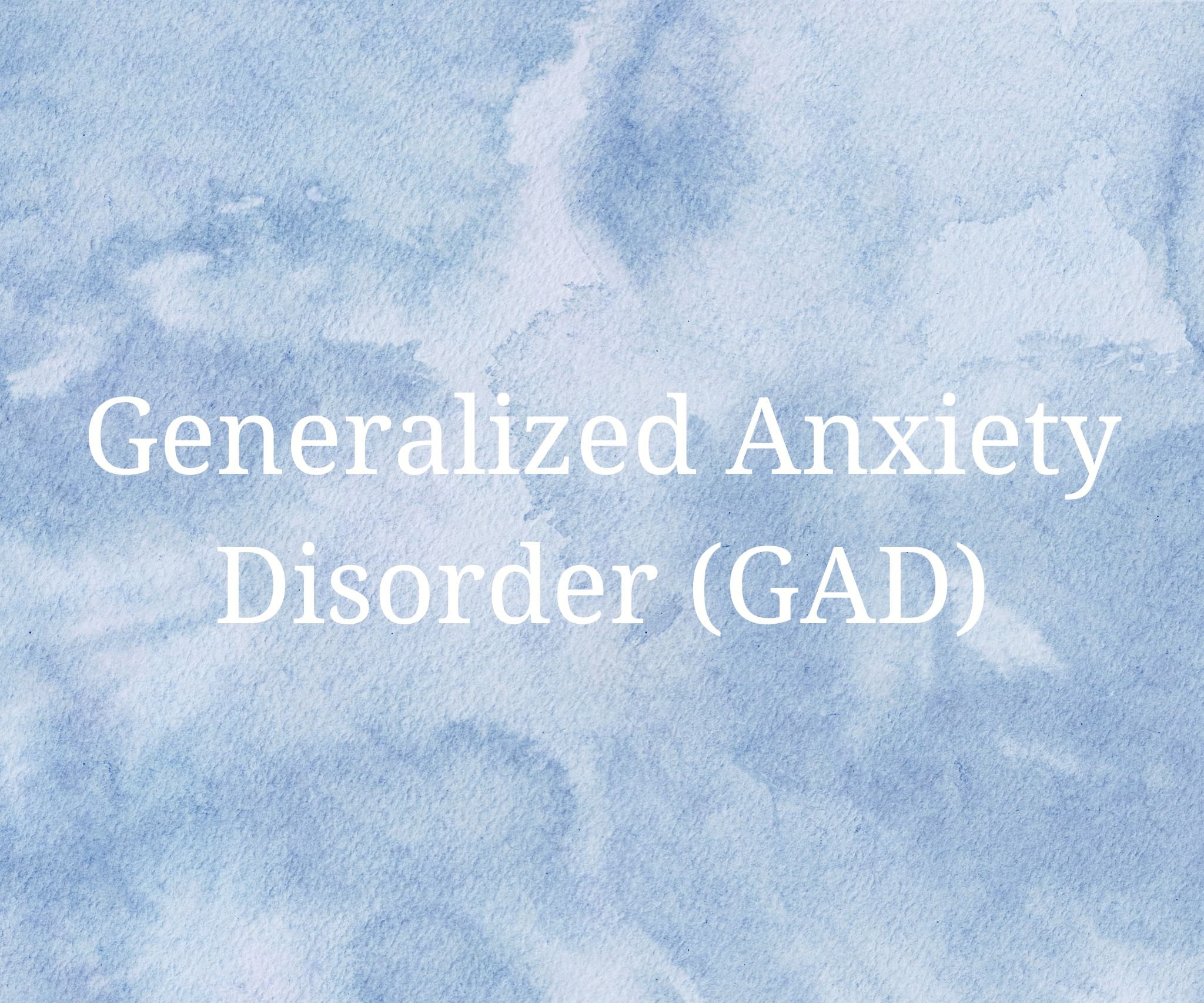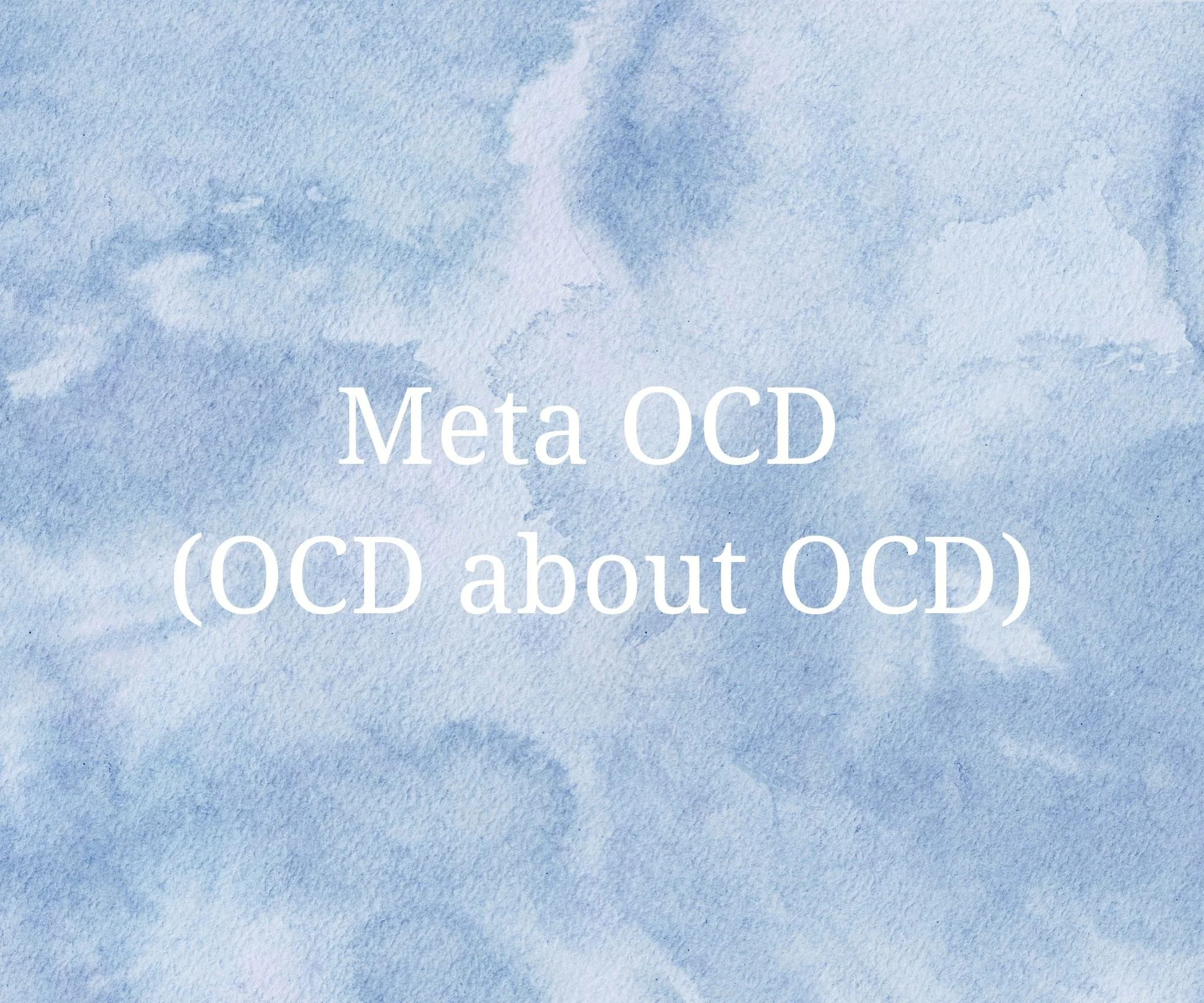
Dictionary
Ontario • Quebec • Nova Scotia • New Brunswick • British Columbia • Saskatchewan • Manitoba • Nunavut
Generalized Anxiety Disorder (GAD)
GAD is characterized by excessive worry and anxiety about a number of events and activities, when the person finds it difficult to control the worry. The anxiety and worry are usually associated with restlessness, feeling keyed up, being easily fatigued, difficulty concentrating, irritability, muscle tension or sleep disturbance.
In addition to worrying, individuals with GAD often perceive worry as impossible to control and harmful. At the same time, however, they may view worry process as important for preparing for the future and for the unforeseen circumstances. The problem is that in any case, excessive worry negatively affects their ability to concentrate, make decisions and solve problems.
Another set of thoughts that is characteristic to people with GAD is their difficulty tolerating the uncertainty, which leads to their continuous exhausting attempts to try and (over)plan for the future.
Cognitive Behavioural Therapy (CBT) is the treatment of choice for this disorder. In treatment, the patient's thinking patterns are carefully examined and addressed. Beliefs that lead to excessive worry, as well as beliefs about the process of worry are re-evaluated. A great deal of time is devoted to increasing the tolerance for ambiguous situations. An emphasis is put on problem solving, as opposed to unproductive worry.
To learn more about various aspects of anxiety, check out recent posts on our blog.
Healthy Lifestyle Counseling
We all know that to achieve better quality of life we need to make healthier diet choices, get regular exercise, manage stress well and create an organized calming environment at our homes. There is a great deal of information around; however, it can sometimes be overwhelming. How do we re-organize our homes and our lives?
At the coaching sessions, we will help you formulate your long-term and short-term goals and motivate and support you in changing your daily habits and routines. Whether you have a specific goal (e.g., organize your week so that you have healthy home-cooked meals, develop and stick to an exercise routine, or make a shift to using non-toxic products in your home), or a broader goal of making healthy changes in many areas of your life - we are here to guide and support you!
Health Anxiety
Illness Anxiety involves a preoccupation with fear of having a serious disorder or a belief that one has a serious disorder. This usually causes great distress. It is treated using Cognitive Behavioural Therapy. One of the main goals of treatment is to identify the thoughts and behaviours that keep the anxiety going, and to gradually modify and eliminate them.
To learn more about various aspects of anxiety, check out recent posts on our blog.
Hit-and-run OCD
This is a subtype of OCD (obsessive-compulsive disorder) characterized by recurrent, distressing thoughts or images of having hit someone with a vehicle and not stopping to help. These thoughts or images may be accompanied by intense feelings of guilt, shame, and anxiety.
Individuals with hit-and-run OCD may experience a variety of compulsions in response to their obsessions. Some common compulsions include checking the news for reports of hit-and-runs, repeatedly retracing one's steps to ensure that no one was hit, and confessing to friends or family members about the imagined hit-and-run.
Hoarding Disorder
Hoarding disorder is characterized by a perceived need to save items regardless of their value and persistent difficulty parting with items due to significant distress associated with attempting to get rid of these items. This results in an accumulation of belongings that clutter major living spaces and therefore interferes with activities of daily living. Research has shown that the most effective treatment for Hoarding Disorder is Cognitive Behavioural Therapy (CBT).
Incel OCD
Men with this OCD subtype are afraid that they may become an incel, a toxic, misogynistic person, never be able to find a romantic partner, or cause harm to others.
Common compulsions include:
Constantly evaluating your appearance
Seeking reassurance in terms of how attractive women may find you
Monitoring your thoughts for any sexist or misogynistic content and trying to get rid of, out-argue, or neutralize them.
Seeking online information about incels or visiting related social media and forums to self-reassure that you are not an incel
Self-punishment
Avoiding social situations out of fear of “snapping” and harming other people
This type of OCD is rarely discussed but the treatment is the same as the treatment of other OCD types and includes a combination of ERP and ACT.
I-CBT. Inference-Based Cognitive Therapy
I-CBT is an evidence-based, specialized form of CBT for OCD treatment. While traditional CBT addresses compulsions through ERP (Exposure with Response Prevention), I-CBT focuses on the obsessions.
Traditional CBT model suggests that OCD is driven by a person’s misinterpretation of randomly occurring intrusive thought as significant. However, according to I-CBT, the obsessions are not randomly occurring intrusive thoughts but instead are inferences (conclusions) that people with OCD come up with because of a faulty reasoning process.
This faulty reasoning process is called inferential confusion, which happens when a person gives credibility to a story he or she created in their mind. The story is based on the person’s ideas and not on the observable reality. This leads to doubting what’s happening in the present moment and also doubting various things about themselves. The person mistakes imagined possibilities with real possibilities.
The goal of I-CBT is to help patients resolve the inferential confusion process. It explores the reasoning behind the confusion and the doubt and helps patients develop awareness of OCD processes that make obsessions appear as if they are based on reality. Patients learn to trust their inner and outer senses and their common sense.
Just-right OCD
It is also known as Exactness OCD or Perfection OCD and is characterized by a need for things to be just right or perfect. People with Just-Right OCD have an intense fear of making mistakes or causing harm, and this fear drives them to engage in repetitive behaviors such as checking, counting, or arranging things in a specific order.
Just-Right OCD can have a significant impact on daily life, as it often affects a person's ability to complete simple tasks such as getting dressed, eating, or going to work or school. The compulsive behaviors associated with Just-Right OCD can be time-consuming and exhausting, leaving little time for other activities or relationships.
Life Coaching
Life Coaching is an action-oriented approach. Its objective is to help people achieve their personal goals and fulfill their potential through establishing longt-term, short-term and immediate goals, increasing motivation, and removing emotional and psychological obstacles. In the course of the life-coaching sessions, all the areas of the person's life that could benefit from improvement will be addressed: personal and family life, career, parenting, productivity, health and lifestyle choices, daily organizational strategies, etc.
Less-known OCD types
OCD can present in a variety of forms and can affect individuals in different ways. While the most well-known forms of OCD involve intrusive thoughts related to contamination, harm, or symmetry, there are also some rare and obscure forms of OCD that can impact an individual's daily life. Here is a list of some of the most obscure and rare forms of OCD and a brief description of each:
1. Harm OCD: This type of OCD involves intrusive thoughts about causing harm to oneself or others. These thoughts can be incredibly distressing and may lead to compulsive behaviors aimed at preventing harm, such as physical and mental checking or seeking constant reassurance from others.
2. Scrupulosity OCD: This type of OCD is characterized by intrusive thoughts related to religious or moral issues, such as blasphemy or impure thoughts. Individuals with scrupulosity OCD may engage in compulsive behaviors aimed at alleviating the guilt and anxiety associated with these thoughts, such as excessive praying or confessing.
3. Sexual Orientation OCD (SO-OCD or HOCD): This type of OCD involves intrusive thoughts or doubts about one's sexual orientation. Individuals with HOCD may experience significant anxiety and may engage in compulsive behaviors aimed at determining their sexual orientation, such as seeking constant reassurance from others or excessively monitoring their sexual thoughts and behaviors.
4. Illness Anxiety: This type of OCD involves intrusive thoughts or concerns about one's health and the fear of having a serious illness. Individuals with health anxiety OCD may engage in compulsive behaviors aimed at reducing anxiety and preventing harm, such as excessive checking for symptoms, seeking constant medical reassurance, or avoiding situations that may trigger their health anxiety.
5. Fear of getting pregnant or fear of getting somepne pregnant: This type of OCD involves fear of accidentally becoming pregnant or impregnating someone, excessive concern over birth control methods and fear of their failure, fear of having had unprotected sex without noticing (and, therefore, multiple checking behaviours), or fear of accidentally impregnating a woman after using a public shower or sauna, or as a consequence of not thoroughly washing hands. People with this OCD type usually feel that no amount of protection from pregnancy is enough.
It is important to note that these types of OCD may not be commonly recognized or understood by healthcare professionals. If you are experiencing symptoms of OCD, it is important to seek help from a mental health professional who is trained in treating OCD and can provide an accurate diagnosis and effective treatment plan.
Metaphysical OCD
It is also known as Existential OCD or Philosophical OCD and involves intrusive, distressing thoughts and worries about the nature of reality and existence. People with Metaphysical OCD often experience persistent doubts and fears about the meaning of life, death, the universe, and their own existence. These thoughts can be incredibly disruptive and distressing, and can lead to significant anxiety and fear.
The obsessions associated with Metaphysical OCD typically involve repetitive and distressing thoughts about the meaning and purpose of life, death, and the universe. For example, individuals with Metaphysical OCD may worry about the existence of an afterlife, the meaning of morality and ethics, or the nature of consciousness. These thoughts can be all-consuming and can cause significant distress and anxiety.
The compulsions associated with Metaphysical OCD may include repetitive behaviors or rituals aimed at reducing anxiety or finding relief from distressing thoughts. These behaviors can range from seeking constant reassurance from others, to engaging in repetitive thought patterns or excessive research. Compulsions may also involve self-harm, such as repetitively picking at skin or causing physical pain, in an attempt to prove one's own existence or to feel something real.
Mindfulness
Mindfulness is the state of acknowledging what is happening in the present moment and accepting it as it is, without judging or evaluating it.
Our every moment is usually filled with thoughts - assessing, judging, worrying, regretting, protesting. We ruminate about the past and worry about the future. There is little space left for attending to the present moment as it is. That way, we identify with our thoughts and don't see ourselves as separate from them. Our thoughts become our reality, and we become slaves to the thoughts that are rapidly generated by our brain and interpreted by our mind.
If, however, you stop and attend to the present as an observer, without identifying with the thoughts and the judgement, you develop a capacity to observe what your mind is doing. That way, you gradually learn to mindfully respond to situations and thoughts, as opposed to being mindlessly reactive to them.
There are two main approaches to developing mindfulness - formal meditation practice and informal mindfulness of the moment practice.
Meditation teaches you to attend to present moment by bringing your awareness back gently from external and internal distraction. It requires allocating some time in your day, starting with a few minutes, to quietly sit and breathe, while acknowledging your thoughts, feelings and physical reactions, but not engaging with them.
The informal practice involves disengaging from your reactive thoughts as you go about your day. This does not mean that your mind needs to be "clear of the thoughts" and does not involve thought stopping. It just means acknowledging the thoughts, accepting them as they are, and continuing to attend to the present moment.
By becoming mindful, we develop an an ability for conscious living, being in touch with yourself, and seeing things as they are.
Morphing or Transformation OCD
Morphing fear involves a fear of being contaminated by someone else's undesirable traits and characteristics, leading to a fear of becoming like that person. Morphing can include a wide range of fears related to changes in the appearance, shape, or size of objects, body parts, or even people.
A person may be afraid to be in contact with people who may potentially contaminate them with some undesirable traits or with their personality.
These fears can be extremely distressing and can significantly impact a person's quality of life. They can lead to feelings of anxiety, depression, and hopelessness, and can also lead to social isolation and difficulties in maintaining relationships.
Obsessive-Compulsive Disorder
This disorder includes either obsessions (intrusive recurrent thoughts and impulses that cause distress) or compulsions (repetitive behaviours or mental acts that the person is driven to perform in order to reduce the anxiety caused by the obsession). In most cases, both obsessions and compulsions are present.
Many people assume that OCD is related to excessive hand-washing and a need to keep everything in order. In reality, however, OCD can take numerous forms, such as:
Compulsive checking. Repeatedly checking and re-checking doors, locks, stove, iron, etc. The checking can also be health-related. Checking temporarily reduces anxiety brought by the obsessive thoughts about pending disaster, but this relief is short-lived - the anxiety always returns with a vengeance.
Washing and cleaning. The constant washing, cleaning, and sanitizing is related to obsessions about contamination by germs, viruses, dirt, chemicals, air pollution and other potentially harmful substances.
Hoarding. Collecting insignificant items and having difficulty letting go of things that other people would consider junk.
Ordering, repeating, and symmetry. Arranging and re-arranging things until it feels "just right."
Scrupulosity. Obsessions about offending God, or violating religious, moral, or ethical principles.
Primary obsessional OCD (Pure O). In this case, there are hardly any visible rituals present. The obsessions can be about violence, harm to self or others, or they can be of sexual nature. Even though this form of OCD is frequently called "Pure O" over the internet, in most cases, people do engage in numerous mental rituals, such as trying to suppress or "neutralize" the thoughts or performing invisible mental rituals - praying, counting, checking, or repeating a lucky/positive phrase.
OCD is treated by Cognitive Behavioral Therapy (CBT) and Exposure and Response Prevention (ERP), which have been proven to be the golden standard of treatment of this disorder.
Check out our blog posts on OCD for more insight.
Onychophagia (nail biting)
Onychophagia, commonly known as nail biting, is a habit of biting and chewing the nails, cuticles, or surrounding skin. It is a form of a body-focused repetitive behavior (BFRB) .
Nail biting is a common habit, especially in children and teenagers. It can be caused by stress, anxiety, boredom, or simply as a habit. However, it can also be a sign of an underlying mental health condition, such as obsessive-compulsive disorder (OCD).
Onychophagia can have several negative consequences, including damaged skin, infections, and damaged teeth. It can also cause social stigma and embarrassment for the individual, leading to a negative impact on their self-esteem and confidence.
Treatment for onychophagia may include cognitive-behavioral therapy (CBT), habit reversal training (HRT), and COMB (Comprehensive Model for Behavioural Treatment). Strategies such as applying bitter-tasting nail polish, keeping nails trimmed and filed, and engaging in alternative activities such as fidget toys or stress balls can also be helpful.
Orthorexia Nervosa (NS)
Orthorexia Nervosa is a condition characterized by a preoccupation with following rigid rules related to eating “clean” or “healthy” foods.
Individuals with orthorexia may experience anxiety when they are offered “unhealthy” foods and after consuming these foods. They often spend a great deal of time researching harms and benefits of various foods.
Individuals with orthorexia do not have an intense fear of gaining weight and do not have a distorted body image.
Panic Attacks
A Panic Attack is a discrete period of intense fear or discomfort that develops abruptly and unexpectedly and reaches a peak within approximately ten minutes. It could include the following symptoms: palpitations or pounding heart, sweating, trembling, shortness of breath, feeling of choking chest pain, nausea or abdominal distress, feeling of derealization or depersonalization, fear of losing control or going crazy, fear of dying, numbing or tingling, and chills or hot flashes. Sometimes they feel like heart attacks.
Panic Disorder
Panic Disorder is characterized by recurrent unexpected Panic Attacks. At least one of the attacks has been followed by a month or more of persistent concern about having another attack, worry about the consequences of the attack, or a change in behaviour related to the attacks. It can often be accompanied by Agoraphobia. Cognitive Behavioural Therapy (CBT) is a very effective specialized treatment of Panic Disorder.




















